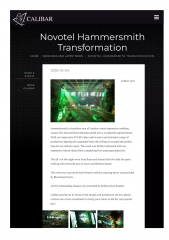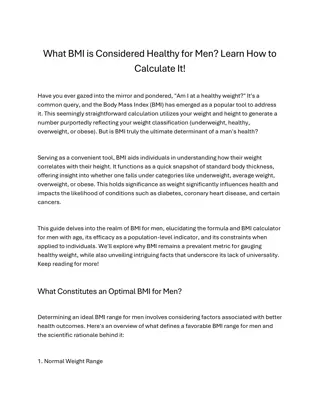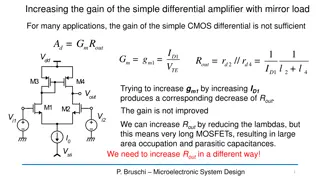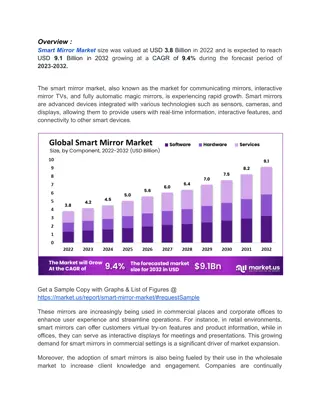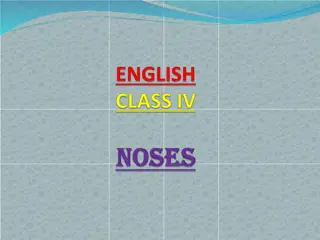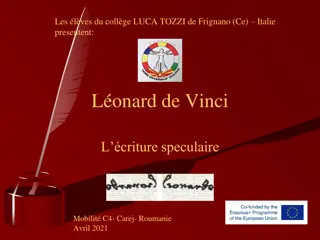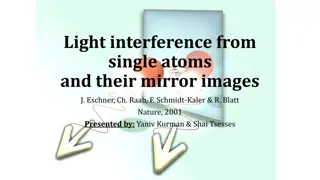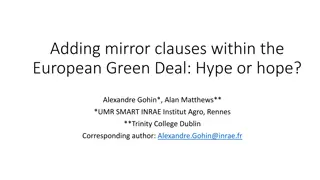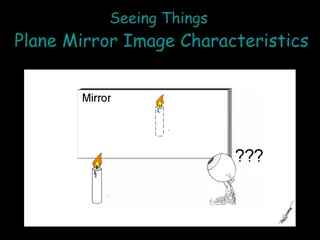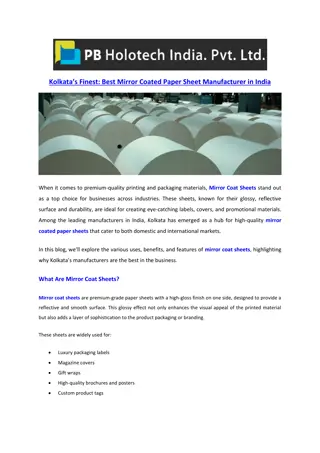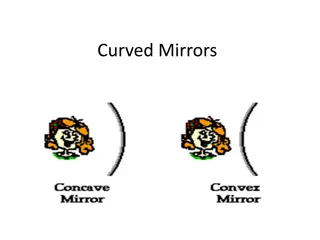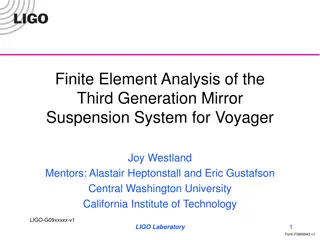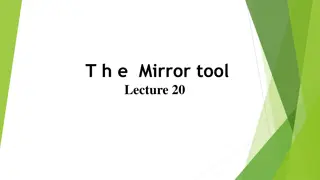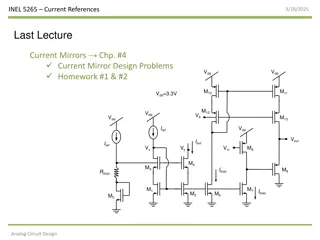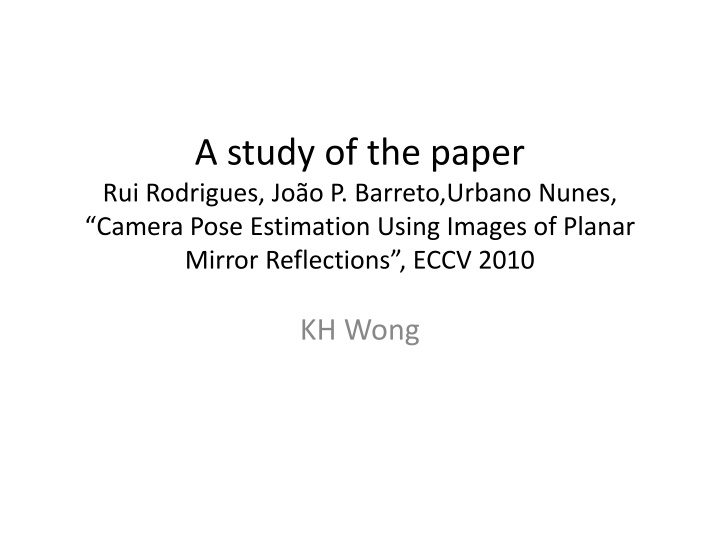
Mirror Reflections in Camera Pose Estimation - Insights from ECCV 2010 Study
Dive into the world of camera pose estimation using mirror reflections as a technique, as explored in the ECCV 2010 study by Rui Rodrigues, João P. Barreto, and Urbano Nunes. Discover the modeling, geometric properties, linear constraints, setup, algorithms, and more related to camera projection through mirrors. Explore the symmetrical transformations, virtual camera concepts, and searching for mirror planes discussed in the study. This comprehensive analysis sheds light on the intricate processes involved in deriving camera pose from planar mirror reflections.
Download Presentation

Please find below an Image/Link to download the presentation.
The content on the website is provided AS IS for your information and personal use only. It may not be sold, licensed, or shared on other websites without obtaining consent from the author. If you encounter any issues during the download, it is possible that the publisher has removed the file from their server.
You are allowed to download the files provided on this website for personal or commercial use, subject to the condition that they are used lawfully. All files are the property of their respective owners.
The content on the website is provided AS IS for your information and personal use only. It may not be sold, licensed, or shared on other websites without obtaining consent from the author.
E N D
Presentation Transcript
A study of the paper Rui Rodrigues, Jo o P. Barreto,Urbano Nunes, Camera Pose Estimation Using Images of Planar Mirror Reflections , ECCV 2010 KH Wong
Introduction Modeling Applications
Modeling Relating Rotation R and translation t and T, T=pose matrix (extrinsic parameter) It projection is q through a camera intrinsic matrix K A mirror is a plane ={n,d} with normal vector (n) and orthogonal distance (d). If X is point on , relating n,d and X. Q is a point in 3D (real), its mirrored point (virtual) is , see diagram (c ) Relating Q and its mirrored point Rearrange becomes S is a symmetry transformation induced by the plane (1) Q Q (2) (3)
The virtual camera Q s projection is q through a camera intrinsic matrix K Based on (1) and (2) You may consider the relation between the real transformation (S) and and virtual transformation (S ) as
Geometric properties Geometric properties Linear Constraints
formula orgina with = point 3D a v q in world coordinate at O Q 3 1 u q = = point 2D camera in coordinate ( ) q C 3 1 1 R T 3 3 3 1 = T 4 4 0 1 T 2 2 I- nn dn = = symteric transform S 4 4 0 1 4 4 = 1 , where S S 4 4 = which normal vector of the is mirror O n 3 1 = = ' 1 Transforma tion from C to C' S TST = orthongal d n distance of world orgin to d 1 1 = w = C camera = center { , } C' virtual = camera center point x a If = x n on the lies = d plane, then = LH left hand rule; RH right hand rule T T dn x Q = = * 0 , intrinsic cam q K I TS K 3 3 1 3 3 4 1
Reference Rui Rodrigues, Jo o P. Barreto,Urbano Nunes, Camera Pose Estimation Using Images of Planar Mirror Reflections , ECCV 2010 Vincent_M, Right vs Left-Handed Matrix representation , https://www.gamedev.net/forums/topic/670415-right-vs-left- handed-matrix-representation/ David Eberly , Right-Handed Coordinates , https://answers.unity.com/storage/temp/12048-lefthandedtorighthanded.pdf

